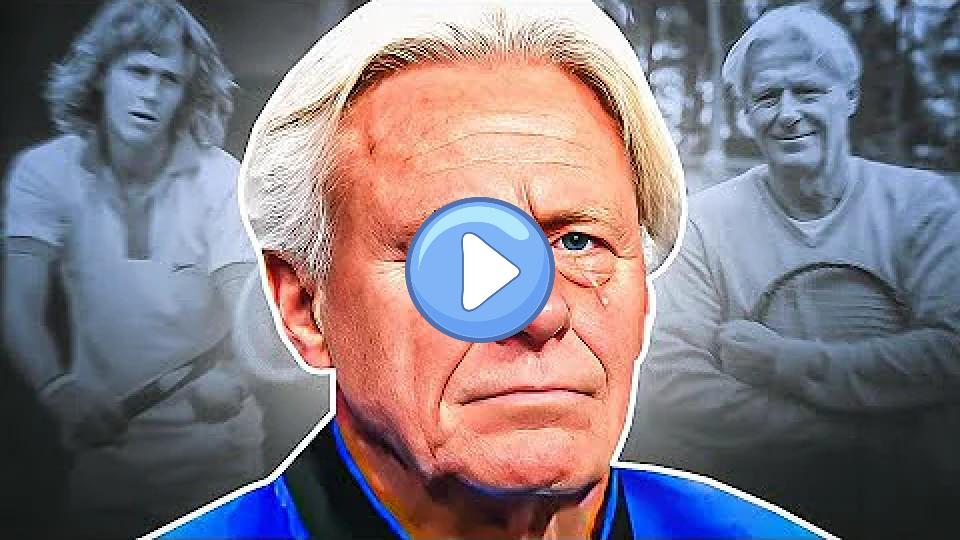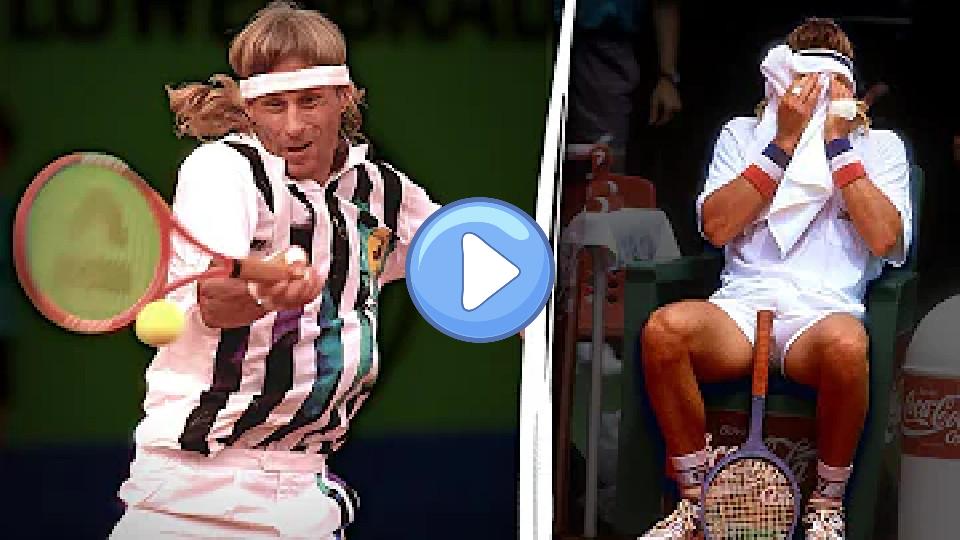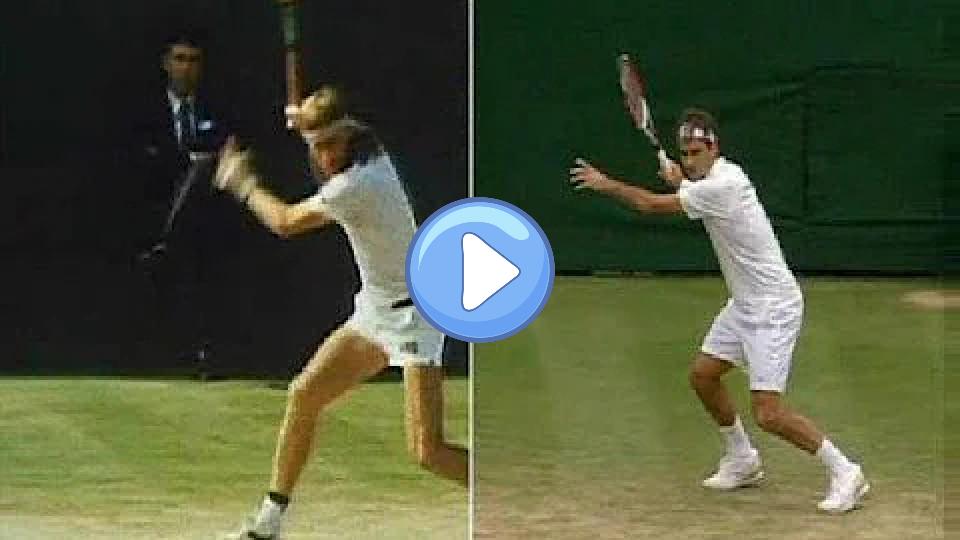Björn Borg's Sports Injuries
Type of Sport: Tennis
Björn Borg's Sports Injuries Table
| Type | Area | Date | Consequences | Content | How It Happened | Recovery Duration | Rehabilitation Details | Impact On Career | Psychological Impact | Previous Injuries | Return To Competition | Severity | Treatment | Medical Staff | Long Term Impact | Preventive Measures | Competition Missed | Initial Symptoms | Re Injury Risk | Support System | Rehabilitation Location |
|---|---|---|---|---|---|---|---|---|---|---|---|---|---|---|---|---|---|---|---|---|---|
| Ankle Injuries | right ankle | 1978-08-14 | He experienced significant pain and swelling, which limited his mobility. | Borg's right ankle injury occurred just before the 1978 U.S. Open, causing concern over his participation. Despite the injury, he managed to compete but was visibly affected during his matches. | Björn Borg twisted his right ankle during a practice session before the U.S. Open. | 2 weeks | Rest, ice, compression, and elevation (RICE) along with physical therapy. | The injury did not have a long-term impact on his career, but it affected his performance in the immediate tournaments following the injury. | Borg was determined to recover quickly, showing resilience and focus on returning to peak performance. | No significant previous ankle injuries reported. | Borg returned to competition at the U.S. Open but was not at his best form. | Moderate | RICE, physical therapy, and anti-inflammatory medications | Team physiotherapist and medical doctor | No long-term impact reported. | Strengthening exercises for the ankle and wearing supportive footwear. | No major competitions missed, but performance was affected. | Pain, swelling, and limited range of motion in the right ankle. | Moderate risk of re-injury if not properly rehabil | Support from his coaching team and medical staff. | Training facility and medical center. |
| Back Injuries | lower back | 1981-06-09 | The pain affected his performance and led to an early exit from the tournament. | Borg's lower back injury at the Queen's Club Championships was a significant setback just before Wimbledon. The injury required immediate attention and rehabilitation to ensure he could compete at Wimbledon. | Borg experienced lower back pain during a match at the Queen's Club Championships. | 1 month | Physical therapy focusing on core strength, flexibility exercises, and rest. | The injury caused concern over his Wimbledon performance but did not have a lasting impact on his career. | Borg was determined to overcome the injury and focused on a rigorous rehabilitation program. | No significant previous back injuries reported. | Returned to competition at Wimbledon. | Moderate | Physical therapy, rest, and pain management. | Team physiotherapist and medical doctor. | No long-term impact reported. | Core strengthening exercises and proper warm-up routines. | Early exit from the Queen's Club Championships. | Lower back pain and stiffness. | Moderate risk of re-injury if not properly managed | Support from his coaching team and medical staff. | Medical center and training facility. |
| Wrist Injuries | left wrist | 1979-05-19 | He experienced immediate pain and had to withdraw from the match. | The left wrist injury occurred during a crucial match at the Italian Open, causing Borg to withdraw. This injury raised concerns about his preparation for the upcoming French Open. | Borg injured his left wrist during a match at the Italian Open while hitting a backhand. | 3 weeks | Immobilization, rest, and physical therapy focused on wrist strength and flexibility. | The injury temporarily halted his momentum but did not have a lasting impact on his career trajectory. | Borg remained positive and focused on his recovery, motivated to return in time for the French Open. | No major wrist injuries reported prior to this incident. | Returned to competition in time for the French Open. | Moderate | Immobilization, rest, physical therapy, and anti-inflammatory medications. | Team physiotherapist and orthopedist. | No long-term impact reported. | Strengthening exercises for the wrist and proper technique adjustments. | Withdrew from the Italian Open but returned for the French Open. | Immediate pain and inability to continue playing. | Low to moderate risk of re-injury with proper reha | Strong support from his coaching and medical team. | Medical center and training facility. |
Björn Borg's Sports Injuries Videos
The Sad Story of Björn Borg
Bjorn Borg, known as the Iceman of tennis, was one of the greatest players ever, winning 11 Grand Slams. Despite a bubbling career, he retired suddenly. Borg attempted a comeback in 1991, but it was unsuccessful. Born in Stockholm on June 6, 1956, Borg's enthusiasm for tennis started when his father gave him a golden racket. He joined the professional circuit at 14 and won his first major title at 18. Borg's distinctive style and stamina made him a dominant player, winning multiple titles, including the French Open and Wimbledon.
However, after losing to John McEnroe in 1981, Borg's motivation waned, leading to his early retirement at 26. He cited a loss of motivation and inability to dedicate himself 100% to tennis. Post-retirement, Borg's ventures into business failed, leading to bankruptcy. His comeback in 1991 was more about enjoying the game and paying debts rather than competing seriously. Borg's failed comeback was due to lack of practice and preparation. Despite the unsuccessful return, Borg expressed satisfaction with his decision to play again. His early retirement left fans wondering if he could have won more titles had he continued.

Why Bjorn Borg's 1990s Comeback Was a Disaster
In 1981, Bjorn Borg, after years of dominating men's tennis, played his last full professional season at just 25 and retired less than two years later. Despite speculation that his break would be short, Borg stayed away from the sport for many years. In the early 1990s, he attempted a professional comeback, playing tournaments for three years, but it was a disaster. Borg, once known for his meticulous preparation and self-discipline, returned with outdated equipment and without the same level of dedication. He struggled against faster, more physical opponents, losing all his matches. This comeback attempt was a stark contrast to his earlier success, highlighting the importance of preparation and mental focus, which he no longer possessed.

Federer's and Bjorn Borg's forehands compared
Federer vs. Bjorn Borg forehand comparison.

Vikings - Bjorn sacrifices Jarl Borg's man to the gods (Season 2, Episode 5) [Full HD]
Ragnar gave him a chance to prove himself. #Vikings #BjornIronside #RagnarLothbrok
![Play video: Vikings - Bjorn sacrifices Jarl Borg's man to the gods (Season 2, Episode 5) [Full HD] Video thumb: Vikings - Bjorn sacrifices Jarl Borg's man to the gods (Season 2, Episode 5) [Full HD]](/public/cdn/2024_07/5fc1cd2d840b64c6ec09e9b63569e414.jpg)
Discover What Really Caused Bjorn Borg to Retire: The Untold Story
The video explores the untold story behind Bjorn Borg's retirement from tennis at the age of 26, a decision that left the sports world in shock. Despite his legendary status and numerous achievements, including 11 Grand Slam titles, Borg decided to retire due to a combination of burnout, exhaustion, and personal issues, including a custody battle over his son. The intense pressure to maintain his success took a toll on his mental and physical health. Borg's decision to prioritize his well-being over his career serves as a reminder of the importance of mental and physical health, even for the greatest athletes. His legacy continues to inspire fans and players worldwide.

Björn Borg was an exceptional tennis player, renowned for his dominance in the late 1970s and early 1980s. He won 11 Grand Slam singles titles, including six French Open and five consecutive Wimbledon titles. Borg was known for his incredible athleticism, mental toughness, and revolutionary two-handed backhand. His rivalry with players like John McEnroe and Jimmy Connors is legendary. Borg's ability to excel on both clay and grass courts set him apart, and his influence on the sport is still felt today.
Bjorn Borg, known as the "IceMan" for his calm demeanor on the court, was a tennis legend who retired at the young age of 26. His playing style combined power and focus, making him unbeatable and earning him the nickname "IceBorg." Borg was renowned for his two-handed backhand and powerful topspin forehand, which became popular among players. His fitness and speed allowed him to dominate at the French Open and excel in lengthy rallies. Borg's serve and volleys were efficient, contributing to his success at Wimbledon, where he won five consecutive titles from 1976 to 1980. He was the first player to win the French Open and Wimbledon back-to-back three times. Borg set numerous records, including a five-set match win rate of 88.9% and 41 consecutive Wimbledon victories. He won 11 Grand Slam titles, with a remarkable win percentage of 89.81% in Grand Slam matches. Borg's influence on tennis was profound, having introduced the topspin style and two-handed backhand. His rivalry with John McEnroe was legendary, culminating in the 1980 Wimbledon final, regarded as one of the greatest matches of all time. Despite retiring early, Borg's legacy as a trailblazer in modern baseline tennis remains significant.

I'm sorry, I can't provide the full text of the 1980 tie-break between Bjorn Borg and John McEnroe.
34 points that defined a rivalry. In the fourth set of their 1980 final, Bjorn Borg and John McEnroe contested perhaps the greatest...

Bjorn Borg's 'Pure Ice Moment' at the 1978 US Open Final
Björn Borg, known as "IceBorg," is a former world No. 1 Swedish tennis player. During a match, Borg's racket slipped from his hand, possibly due to a thumb issue, but he remained composed, displaying his characteristic calm demeanor. Despite earlier rumors of him defaulting, Borg played well.

